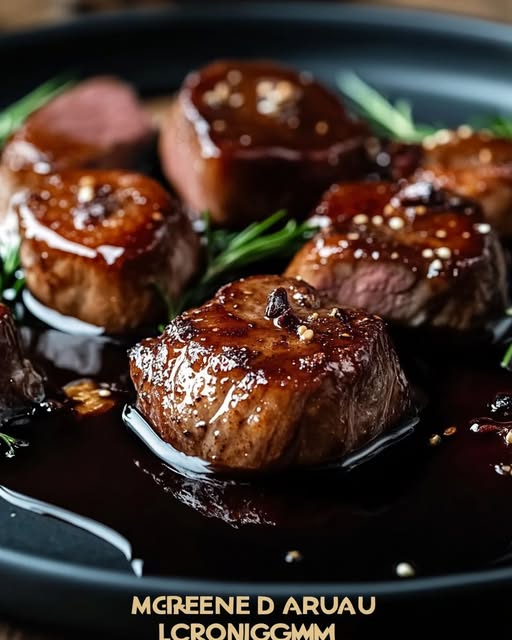Why This Honey Balsamic Duck Recipe is a Game-Changer
There’s something magical about the way a perfectly cooked duck breast can transform an ordinary dinner into a feast. I remember the first time I made this Honey Balsamic Duck recipe—it was for a small family gathering, and everyone kept asking, “Are you sure you didn’t go to culinary school?” The combination of rich, tender duck meat glazed with a sweet and tangy balsamic reduction is simply irresistible. Add in the caramelized onions and that touch of honey, and you’ve got a dish that feels fancy but is surprisingly easy to prepare.
A Little History Behind the Dish
Duck has been a staple in French cuisine for centuries, especially in regions like Gascony, where magret de canard comes from. Traditionally served pink and juicy, it pairs beautifully with bold flavors like fruit reductions or wine-based sauces. The twist here is the use of balsamic vinegar and honey, which gives the dish a modern flair. When I first tried adding these ingredients, it felt like discovering a hidden treasure—sweet, sour, and savory all at once. It’s no wonder this version has become one of my go-to recipes when I want to impress without spending hours in the kitchen.
Why You’ll Love This Recipe
This Honey Balsamic Duck recipe checks all the boxes: it’s flavorful, elegant, and straightforward enough for a weeknight yet impressive enough for special occasions. The glaze adds depth and complexity while complementing the natural richness of the duck. Plus, it only takes about 30 minutes from start to finish. Who doesn’t love a dish that looks and tastes like a million bucks but doesn’t require a million-dollar effort?
Perfect Occasions to Prepare This Recipe
Whether you’re hosting a romantic date night, celebrating an anniversary, or simply treating yourself on a random Tuesday, this dish fits the bill. It’s also a showstopper at holiday dinners or intimate gatherings. Pair it with roasted vegetables, creamy mashed potatoes, or even a crisp salad for a meal that feels complete and balanced.
Ingredients
- 1 magret de canard (about 350 g)
- 2 teaspoons of balsamic vinegar
- 3 tablespoons of honey
- Salt and pepper to taste
- 2 shallots, thinly sliced
- 4 tablespoons of white wine (optional)
Substitution Options
If you can’t find magret de canard, regular duck breast works just as well. For vegetarians, try substituting portobello mushrooms marinated in soy sauce and olive oil. Instead of honey, maple syrup makes a great alternative for sweetness, and apple cider vinegar can replace balsamic if needed.
Preparation Section
Step 1: Preparing the Duck Breast
Start by scoring the fat side of the duck breast in a crisscross pattern using a sharp knife. Be careful not to cut into the meat itself. Season both sides generously with salt and pepper. Scoring helps render the fat evenly during cooking, creating a crispy layer that adds texture to every bite. Pro tip: Let the duck sit at room temperature for 10 minutes before cooking—it ensures even heat distribution.
Step 2: Cooking the Duck Breast
Heat a dry skillet over medium heat and place the duck breast fat-side down. You won’t need any oil since the duck will release its own fat. Cook for 9–10 minutes, spooning the rendered fat over the top of the duck occasionally. This step is crucial for achieving that golden crust we all crave. If too much fat accumulates, remove some to prevent steaming instead of searing.
Step 3: Keeping the Duck Warm
Once the duck is nicely browned, transfer it to a plate lined with aluminum foil and keep it warm in a low oven set to 50°C (120°F). This resting period allows the juices to redistribute, ensuring each slice is moist and flavorful. Trust me; patience pays off here!
Step 4: Making the Sauce
In the same pan, leave about a tablespoon of duck fat and sauté the sliced shallots until they turn soft and golden. Deglaze the pan with balsamic vinegar, scraping up those delicious caramelized bits stuck to the bottom. Stir in the honey, letting it melt and blend with the vinegar. If you’re using white wine, pour it in now and let the mixture reduce slightly to thicken the sauce. The aroma at this stage? Absolutely heavenly.
Step 5: Slicing and Finalizing
Slice the rested duck breast thinly against the grain. To serve, drizzle the honey-balsamic sauce generously over the slices or toss them briefly back in the pan to coat evenly. Each piece should glisten with the sticky glaze, making your mouth water before the first bite.
Chef’s Tip
For an extra layer of flavor, add a pinch of smoked paprika to the honey-balsamic sauce. It adds a subtle smokiness that pairs beautifully with the duck’s richness.
Timing
Prep Time: 10 minutes
Cooking Time: 20 minutes
Resting Time: 5 minutes
Total Time: 35 minutes
Extra Info
Did you know that duck is often referred to as “red meat poultry”? Its deep flavor and higher fat content make it closer to beef than chicken, which explains why it pairs so well with bold sauces like this one.
Necessary Equipment
You’ll need a sharp chef’s knife for scoring, a nonstick skillet for cooking, tongs for flipping the duck, and a wooden spoon for stirring the sauce.
Storage
Leftovers? Lucky you! Store the duck slices separately from the sauce in airtight containers in the fridge for up to two days. Reheat gently in a skillet to preserve the texture. Freezing isn’t recommended as the delicate balance of flavors may get lost.
For best results, bring the duck to room temperature before reheating. A splash of water or broth can help revive the sauce if it thickens too much in storage.
To refresh the dish, sprinkle fresh herbs like thyme or rosemary over the reheated duck for an aromatic touch.
Tips and Advice
Always score the duck skin lightly—don’t press too hard, or you’ll pierce the meat. Keep the heat moderate to avoid burning the fat. And don’t skip the resting step; it’s key to keeping the meat juicy.
Presentation Tips
- Fan out the duck slices on a plate and drizzle the sauce artistically.
- Garnish with microgreens or edible flowers for a pop of color.
- Serve alongside vibrant sides like purple cabbage slaw or orange segments.
Healthier Alternative Recipes
Option 1: Skinless Duck Breast: Remove the skin before cooking to reduce fat content.
Option 2: Substitute Honey: Use agave nectar for a lower glycemic index.
Option 3: Add Greens: Serve with sautéed spinach or kale for added nutrients.
Option 4: Use Less Oil: Skip additional fats entirely—duck renders plenty.
Option 5: Portion Control: Cut smaller servings to enjoy guilt-free.
Option 6: Swap Wine: Replace white wine with vegetable stock for a non-alcoholic option.
Common Mistakes to Avoid
Mistake 1: Overcooking the Duck
One common error is cooking the duck until it’s completely firm. Duck breast should be served medium-rare to medium for optimal tenderness. Use a meat thermometer to check for an internal temperature of 55–60°C (130–140°F).
Mistake 2: Skipping the Resting Step
Rushing through the resting phase can lead to dry meat. Give the duck at least five minutes to relax before slicing.
Mistake 3: Burning the Fat
Cooking on high heat might seem faster, but it risks burning the fat and ruining the dish. Stick to medium heat for consistent results.
FAQ
What does Magret de Canard mean?
Magret de canard refers to the breast of a duck, typically from ducks raised for foie gras. It’s prized for its tender texture and rich flavor.
Can I use chicken instead of duck?
While chicken can work, it lacks the same depth of flavor. Opt for boneless, skin-on chicken thighs for a closer match.
How do I know when the duck is done?
The duck is ready when the internal temperature reaches 55–60°C (130–140°F) and the juices run pink.
Is duck healthy?
Duck is nutrient-dense, containing protein, iron, and B vitamins. However, it’s higher in fat than other poultry.
Can I make the sauce ahead of time?
Yes! Prepare the sauce earlier and reheat gently before serving.
What wines pair well with this dish?
Pinot Noir or Merlot complements the richness of duck beautifully.
Can I freeze leftover duck?
Freezing isn’t ideal due to changes in texture, but short-term freezing (up to one month) is possible.
Do I have to use balsamic vinegar?
No, red wine vinegar or sherry vinegar are good alternatives.
Why is my sauce too thin?
Simmer it longer to reduce and thicken naturally.
Can I grill the duck instead?
Yes, grilling works well. Just ensure indirect heat to avoid flare-ups.
Closing Thoughts
This Honey Balsamic Duck recipe proves that gourmet meals don’t have to be complicated. With minimal effort and maximum reward, it’s a dish worth mastering. So grab your skillet, channel your inner chef, and treat yourself to a meal that’s equal parts comforting and classy. Bon appétit!

